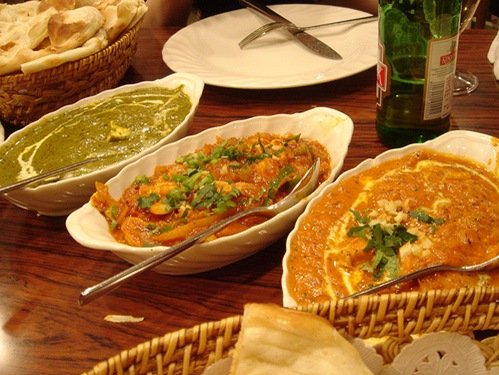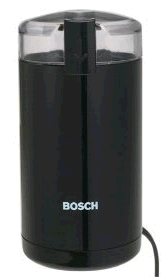From the Subcontinent

|
The secret layering of aroma...Aromats, including spices, herbs and vegetables have different properties. Care must be taken in how they are bloomed, their aromas exploited or are cooked.
Therefore, curries traditionally are "built" in many layers. Layering is the personality secret of curries just as it is with other food preparations.
Curries are made creamy by the addition of pureed nuts (especially cashews), cream, yogurt, coconut milk, etc. SpicesMyriad aromates and spices are the secret to Indian cooking. Seemingly, it takes a doctorate in chemistry to comprehend the subtle mixing of onion, garlic, cumin, coriander, cinnamon, ginger, and more including when to cook what, how fine to grind, etc. And yet, each woman in India has her own spice box and, from example and instruction by the other women in her family, evolves her own signature blends. Hands-down, Indian cuisine is the richest in the world. It is virtually psychedelic in scope. A curry is a dish that is framed around a particular construction of spices and aromates. Originally from a Tamil word for “meat in gravy,” curry is loosely used to indicate any number of spicy dishes especially from South Asia. Curry powder from the spice asile of your grocery store is someone’s interpretation of a mixture of various spices. You may or may not like it. Garam masala is a powder of various ground spices frequently used in Indian cooking—a sort of subset of a full, varied curry powder. Some Indians use a garam masala preparation and some, indignantly, refuse to use one preferring to rely on their own interpretation. It’s my observation that no Indian would ever use a curry powder commercially available from a US grocery. Any mixture of spices is called a masala including the dish made from it. Hence, chicken tikka masala (tandoori chicken in a tomato-based masala), aloo masala (mashed potato with spices often to wrap in a dosa or South Indian crêpe). TheoryThe flavors in spices, herbs and general aromates are soluble and usable as a result of extracting them according to specific methods. The flavors of many spices are a product of their essential oils and, therefore, cannot be extracted in contact with water, but only oil. Others, including herbs and aromates like carrot and celery, can be got with water. An important step in curry preparation is blooming spices and aromates in oil at or near the beginning of preparation or later on in “water” (i.e.: what the preparation has become at some stage in its preparation—mostly water). Compare this to the more random tossing of spices and herbs into a dish in Western cooking. However, the single most important thing to learn in creating a curry (by which I mean one of those delicious, spicy, soupy dishes from the restaurant like khurma, masala or just “curry”) is how to cook the onions and other aromates at the beginning of the dish. Indeed, I can save you what took me off and on more than five, discouraging years before I figured it out: cook the onion (garlic, ginger, chilis, tomatoes) on low heat (simmer) for a very long time before finishing the dish. See my definitive khurma recipe (linked on this page). Preparing spices
Spices including dry seeds, pieces of bark, leaves (herbs), etc. are often ground since their flavor rather than their texture is most highly prized. An inexpensive Bosch or Krupps coffee grinder is very useful for this—available at your local cooking store, Walmart or from Amazon.com. Fresh, un-pre-ground spices and herbs are more aromatic than what you can buy in the spice asile of your grocery store. Moreover, especially when obtained at an Asian or Indian grocery store, they are a tiny fraction of the cost. For instance, a tiny thimble-full of tumeric from my local grocery store—when I can find it there—costs nearly $5 while I can buy a 14 ounce bottle of it at any Indian store for half that. How to roast cumin and other seeds...Take a small sauce pan or frying pan and heat it until moderately hot. Put in the cumin seeds and shake the pan back and forth or stir until seeds turn from dark green to brown, which can happen very quickly. Remove seeds from pan quickly since the pan’s mass will continue to scorch them. When cool, grind to a powder. Other tips and theological rants are offered throughout my Indian pages here. |